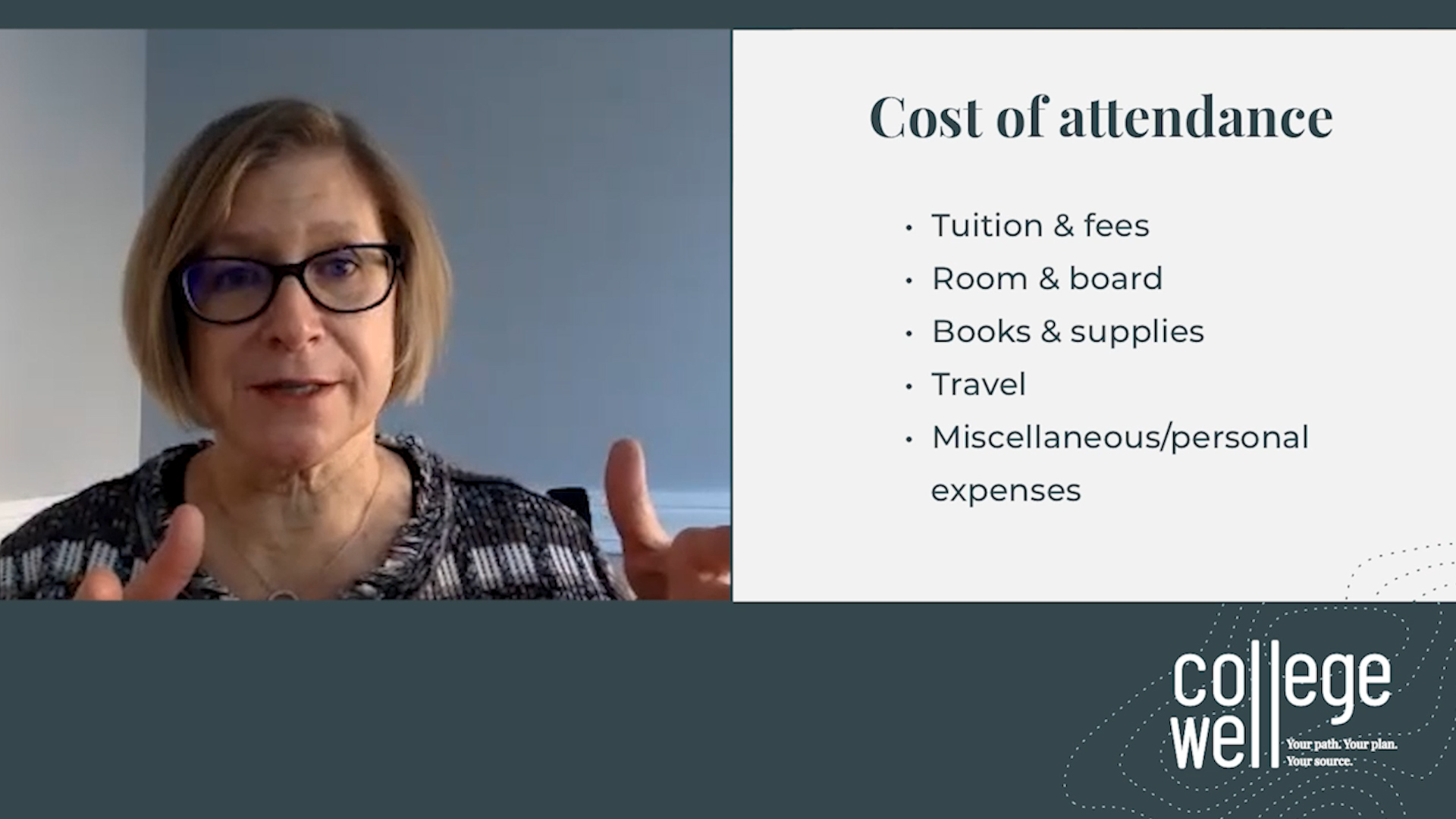What you see on a college website isn’t necessarily what you’ll pay. While that’s good news, it can be confusing. You need to know the real cost of college — for your family and no one else. A lot of planning and many decisions hinge on it.
Kathy Anderson, associate vice president of student financial services at Berklee College of Music, joins our Learn from the Experts series. She takes the confusion out of financial terms and formulas and talks about what really factors into a family’s cost of attending college.

What it costs vs. what it costs you
“You’ll see a published price, a cost of attendance, which is a comprehensive figure,” says Kathy. “It includes tuition and all the other things it takes to be a student, like room and board, books, etc. Then there’s what’s called the net price, which is the price the family will pay after funding from the college itself — grants or scholarships [aka discounting] — is applied toward the cost of tuition.”
How a college discounts tuition
“Discounting is the lingo [colleges] use to talk about how much funding we put out on the street for students,” says Kathy. “At the heart of it, tuition discounting is what a college does to attract and retain students. [Discounting] varies greatly by institution.”
Getting to your own number
“The best place to find out what a college might cost you is through the institution’s net price calculator,” says Kathy.
But she cautions families, “[The net price calculator] is only as good as the information you can put in.”
Kathy recalls looking at the calculator for her own son at different ages and the limitations of using it too early. Now that her son is 15, Kathy at least has a GPA and PSAT score.
“It’s a really important tool,” says Kathy. “But it is going to get more accurate as you have more data points to put into it.”
When the award letter arrives
“[Colleges] are moving toward having standardized award letters,” says Kathy. In the meantime, most letters contain:
- Cost of attendance (that comprehensive number that includes more than tuition)
- Financial aid
- Grants and scholarships
- Student loans
- Additional financing available like Direct PLUS Loans
An award letter may not list the net price, so you’ll need to do the calculation yourself. If you’re confused or have concerns, make sure you reach out to the college.
Building a college list around costs
- Include financially safe schools. “Look at the full cost of attendance, assuming no assistance,” suggests Kathy. “Is this feasible for the family?”
- Don’t let sticker shock faze you. “Don’t eliminate institutions just because of what you perceive to be a high sticker price,” urges Kathy. “Often those institutions do have funding that can drop the price for you.”












